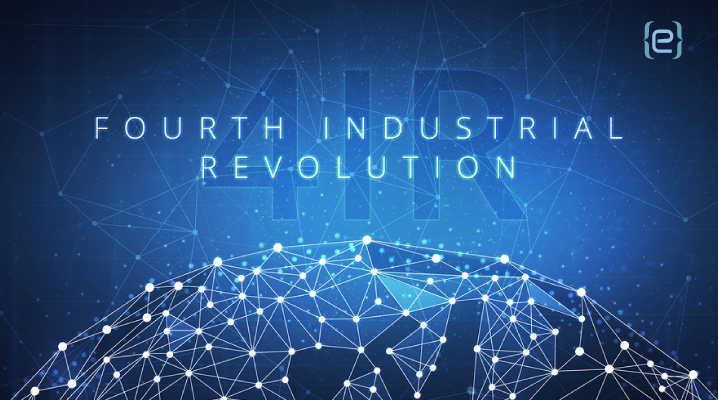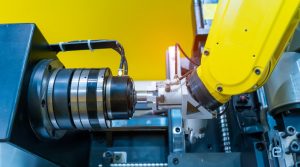Join the Fourth Industrial Revolution: 5 Ways to Transform Your Business


A revolution is underway. It is disruptive and worldwide, and it has the power to radically change modern society. For manufacturing, the fourth industrial revolution brings both challenge and opportunity. Businesses can harness the power of the revolution to increase productivity, reimagine factory processes and improve efficiency.
From steam power to the assembly line to computerization, the first three industrial revolutions reshaped manufacturing. The fourth revolution blends the physical and digital worlds. Driven by the Internet of Things (IoT) and powered by data, Industry 4.0 reaches from the factory floor to the household kitchen and beyond.
Businesses today must embrace the fourth industrial revolution to remain competitive. For many, the advent of cyber-physical systems and artificial intelligence (AI) can prove intimidating. Here are five ways to join the revolution and compete more effectively.
1. Supply Chain Management
From the vendor that maintains your production equipment, to the assembly line and the warehouse and on to the customer, the IoT can transform your supply chain. Asset tracking and inventory management provide a great place to start.
With radio-frequency identification (RFID) tags, you can track product in real time from the factory floor to the cash register. Combined with warehouse and in-store sensors. RFID tags significantly increase inventory accuracy.


2. Connected Devices
From collaborative robots that work side-by-side with humans on the factory floor, to machinery that provides an alert before maintenance is needed, connected devices are streamlining manufacturing.
In a smart factory, machines communicate with each other and with the humans who operate them. In addition, operators can easily monitor workloads and equipment condition and make adjustments remotely.
3. Cloud Computing
Cloud computing provides the power behind connected devices. According to the International Data Corporation, by the year 2020, 60 percent of robots will depend on cloud-based software. Cloud applications facilitate the flow of data from machinery to human workers, as well as instructions from humans back to the machines.
For instance, data captured by robots is stored in the cloud and available in real time to analysts who can then use that data to adjust processes for maximum efficiency. The cloud also allows machines to communicate with each other and coordinate related tasks.
Likewise, cloud-based applications facilitate the delivery of specialized programming remotely to a machine on the factory floor. Using the cloud, operators can adjust the programming for multiple machines at once or quickly change a single machine from one task to another.
4. Data Analytics
With connected devices and asset tracking in place, the manufacturing process generates huge amounts of data. Analytics allow manufacturers to synthesize that information and translate the data into increased productivity.
For example, with historical data from machines on the factory floor, analysts can predict outages before they occur. A study by Forbes reports that predictive analytics can reduce breakdowns and unscheduled downtime by as much as 26 percent.
Data analysis can also help manufacturers isolate issues to a specific component of the production process, greatly enhancing efficiency.
5. Train a Digital-savvy Workforce
One of the most significant challenges facing businesses in the fourth industrial revolution is the lack of workers with the needed skill sets. Historically, factory jobs were manual, repetitive. Even now, robots have begun to perform much of the work historically done by humans.
While the digitization of manufacturing may actually result in a net increase in jobs, many of those jobs require a new set of skills. Increasingly, manufacturers need workers with aptitude in computing, engineering and data analytics. Even traditional jobs such as machine maintenance now involve digital expertise.
Forward-thinking businesses address the skill gap by investing in people. Hence, training programs involving augmented and virtual reality can bring current workers up-to-speed on new technology. Likewise, apprentice programs and collaboration with technical degree programs can build a new workforce prepared to meet the needs of a digital world.
Partner in Business Transformation
One certain characteristic of the fourth industrial revolution is the rapid evolution of technology. Yesterday’s possibilities have become the norm of operation today. At the same time, increased cyber threats require multi-layer cyber-defense solutions.
Digital technology experts offer customized cloud, network and cyber-security solutions for manufacturing. With extensive manufacturing industry expertise, trained specialists ably assist business leaders embrace the possibilities of the future.
Recent Posts
IT Consulting Services: Strategic IT Leadership for Business Growth
Discover how IT Consulting Services from eMazzanti Technologies provide the strategic leadership needed for smart…
Engage Your Workflows with Microsoft Viva
Discover how Microsoft Viva can transform your workplace into a hub of engagement, productivity, and…
Collaboration Made Simple with Microsoft SharePoint
Discover how Microsoft SharePoint optimizes document workflow, enhancing team collaboration and productivity.
Defender Secures Endpoints
Discover how Microsoft Defender for Endpoint provides comprehensive security for businesses, offering real-time threat detection…
The Power of Feedback for Business Growth
Discover how customer feedback drives business growth, enhances customer loyalty, and keeps your company competitive.
Compliance Made Easy with Microsoft 365 and eMazzanti Technologies
Discover how Microsoft 365's robust security features, combined with eMazzanti Technologies' expertise, simplify compliance for…


